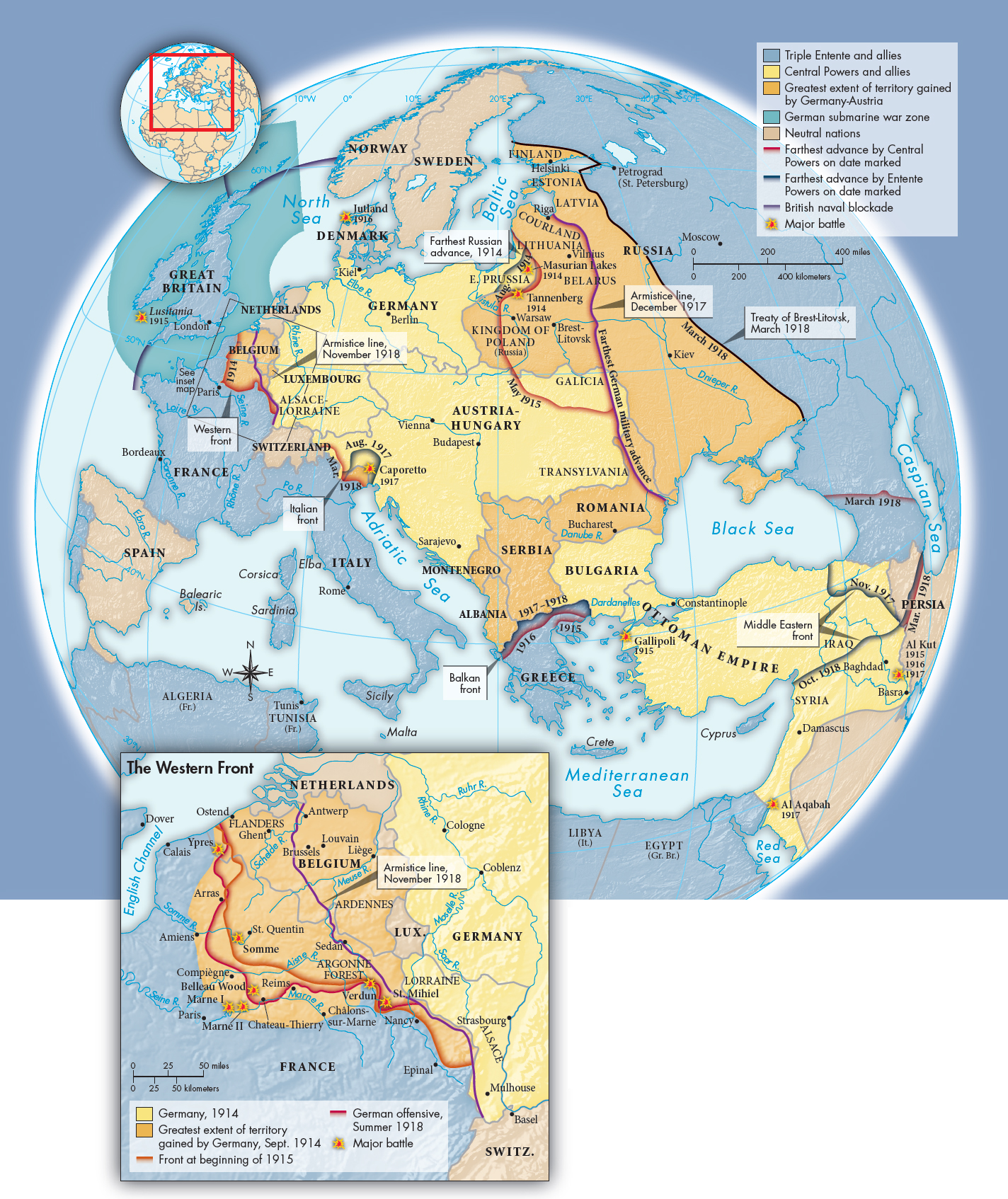Stalemate and Slaughter
When the Germans invaded Belgium in August 1914, the Belgian army defended its homeland and then fell back to join a rapidly landed British army corps near the Franco-

The two stalled armies now dug in behind rows of trenches, mines, and barbed wire. A “no-
The human cost of trench warfare was staggering, while territorial gains were minuscule. In the Battle of the Somme in summer 1916, the British and French gained an insignificant 125 square miles at a cost of 600,000 dead or wounded. The Germans lost 500,000 men. That same year the unsuccessful German campaign against Verdun cost 700,000 lives on both sides. The slaughter was made even greater by new weapons of war — including chemical gases, tanks, airplanes, flamethrowers, and the machine gun.
On the eastern front, the Russians moved into eastern Germany but suffered appalling losses against the Germans at the Battles of Tannenberg and the Masurian Lakes in August and September 1914 (see Map 28.3). German and Austrian forces then reversed the Russian advances of 1914 and forced the Russians to retreat deep into their own territory in the 1915 eastern campaign. A staggering 2.5 million Russians were killed, wounded, or taken prisoner.
These changing tides of victory and hopes of territorial gains brought neutral countries into the war. In May 1915 Italy joined the Triple Entente of Great Britain, France, and Russia in return for promises of Austrian territory. In September Bulgaria joined the Triple Alliance in order to settle old scores with Serbia.